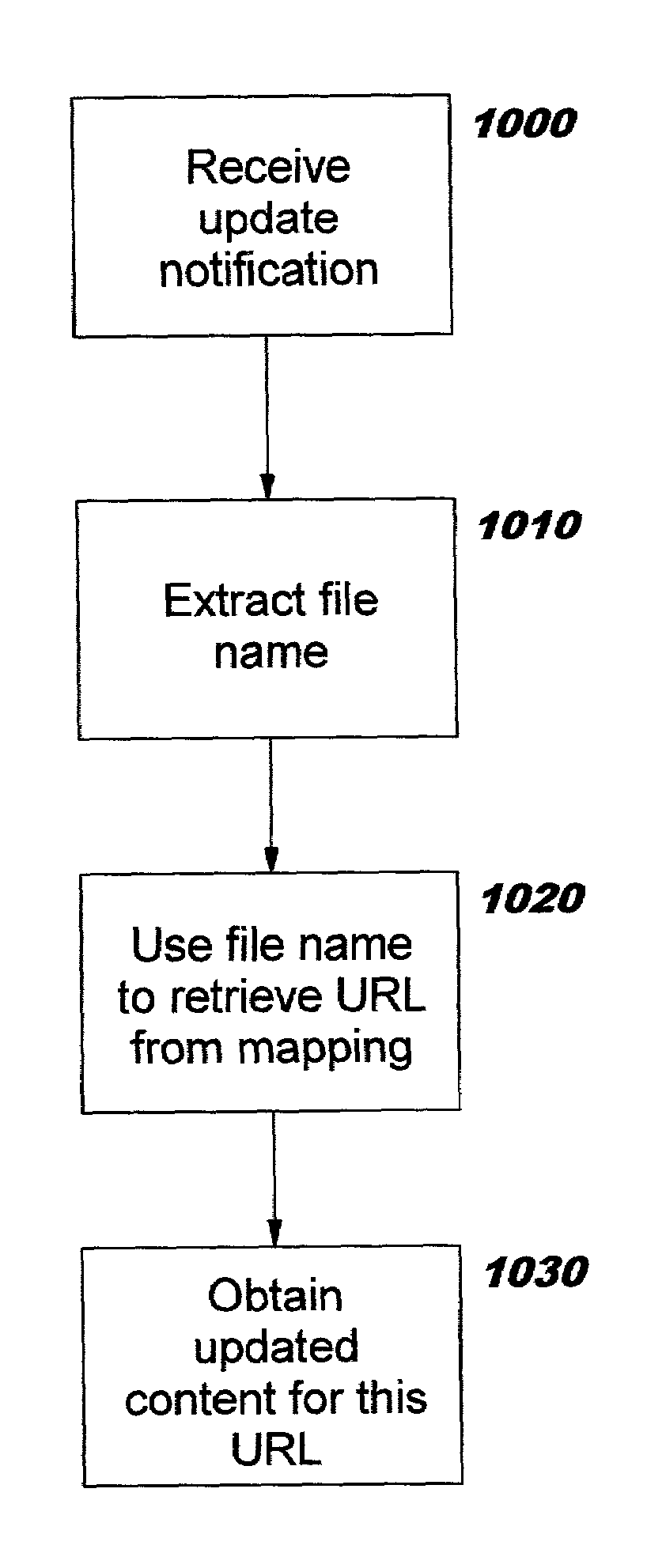Addressing the name space mismatch between content servers and content caching systems
a name space and content technology, applied in the field of distributed computing networks, can solve the problems of increasing the cost of doing business, affecting the overall system throughput, and affecting the satisfaction of users,
- Summary
- Abstract
- Description
- Claims
- Application Information
AI Technical Summary
Benefits of technology
Problems solved by technology
Method used
Image
Examples
Embodiment Construction
[0038]The present invention provides techniques for resolving the name space mismatch between URL-based content caching systems and file name-based content servers. As will be discussed in more detail below, a file name-to-URL mapping is created for use by content caching systems, and data in protocol response messages (and optionally in protocol request messages) is augmented to transmit information for use in creating this mapping.
[0039]The disclosed techniques enable content management systems to propagate update notifications and invalidation notifications not only to content servers which use file-based naming conventions, but also to content caching systems which use URL-based naming. These notifications may use a common interface format, whether they are destined for a content server which traditionally understands file-oriented names or for a content caching system which traditionally does not.
[0040]In preferred embodiments, implementations of the present invention may opera...
PUM
 Login to View More
Login to View More Abstract
Description
Claims
Application Information
 Login to View More
Login to View More - R&D
- Intellectual Property
- Life Sciences
- Materials
- Tech Scout
- Unparalleled Data Quality
- Higher Quality Content
- 60% Fewer Hallucinations
Browse by: Latest US Patents, China's latest patents, Technical Efficacy Thesaurus, Application Domain, Technology Topic, Popular Technical Reports.
© 2025 PatSnap. All rights reserved.Legal|Privacy policy|Modern Slavery Act Transparency Statement|Sitemap|About US| Contact US: help@patsnap.com



